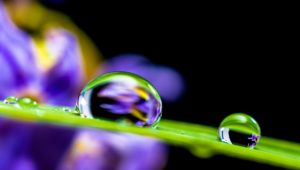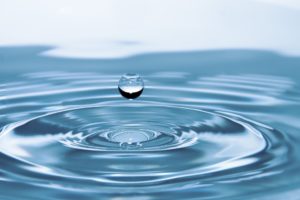Well, not exactly. But installing a drip system can save time, money, and the environment.
As the temperatures begin to heat up for the summer, landscapes and gardens are beginning to require more water to remain healthy and productive. Keeping your plants watered can significantly add to your daily yard tasks along with your water bill. Seeking more efficient way of irrigation can save time, water, and money. Drip irrigation is an option that certainly fits the bill.
Benefits of Drip Irrigation
Drip irrigation has many benefits. The most obvious benefit is that drip irrigation uses up to fifty percent less water compared to other irrigation methods. Using less water is a great way to be environmentally responsible. It also saves on your utilities costs. Drip irrigation can also save you a significant amount of time in watering your landscape, freeing up time to spend on whatever else you’d rather be doing. Those who have health or other accessibility considerations benefit from an installed system to reduce workload. An overlooked, but important, benefit of drip irrigation is decreased water runoff. Along with this comes decreased leaching of nutrients away from the root zone of plants. This allows you to keep your nutrients in your landscape and out of other water sources, resulting in less need for fertilizers and less water pollution. Last, but not least, many plant pests and diseases thrive when foliage becomes wet. Implementing drip irrigation allows plant foliage to remain dry and less prone to these issues.
Soaker Hoses as Drip Irrigation
While there are various types of drip irrigation, one of the most common is a simple soaker hose. A soaker hose contains small perforations that allow water to seep along the entire hose length. These hoses can be installed into a garden or landscape by weaving around plants or along rows. The hoses are left for the season and you can simply attach a garden hose to the end. As with most products, soaker hoses come in different styles and qualities. A common soaker hose is made from recycled rubber. These are relatively inexpensive, but they are also a bit stiff and some deteriorate rather quickly. Another style that is increasingly more popular uses a canvas-like fabric hose. These are quite flexible when installing and can roll up easily to be stored. If you choose this type, make sure you don’t cause kinks by making sharp bends in the hose. With both types, it is a good idea to pin the hose down to keep it in place. Keep in mind that you want the water to seep or drip from the hose. If you have a high-pressure water source, you may need to incorporate a pressure reducer for your hose. Some hoses already come with a pressure-reducing disc, but reducers can also be purchased separately.
Tubing Systems for Drip Irrigation
Another type of drip irrigation involves a system of tubing to deliver water directly to specific locations in the landscape. This typically is a semi-flexible polyethylene tubing and can include various types of fittings to divert water through smaller rubber tubing to those locations. This type of system can be beneficial for xeriscapes or other situations where the plants are spaced enough that you wouldn’t want to water between them. These systems are typically incorporated as zones in automatic sprinkler systems. While not very difficult to install (relative to a standard PVC irrigation system), considerations have to be made around the pressure of the system, since drip systems are designed to be low pressure systems. This means you will likely be required to incorporate pressure reducers and build many small zones instead of a single large drip zone. If you are interested in a do-it-yourself project, many irrigation supply companies will help you design an appropriate system and provide a list of all the necessary components. You will likely need to provide an at-scale layout of the area and some basic information about your water source. Alternatively, you could hire a landscape company to design and install a system.
In any case, putting in the initial effort and resources to implement drip irrigation in your landscape or garden will almost certainly be well worth it. Any project that can save time, money, and the environment should likely be on your to-do list as we all try to do our part to be more water wise. So save the world one drip at a time.


